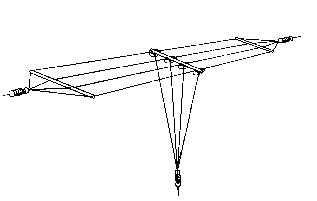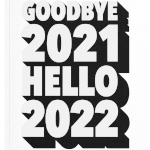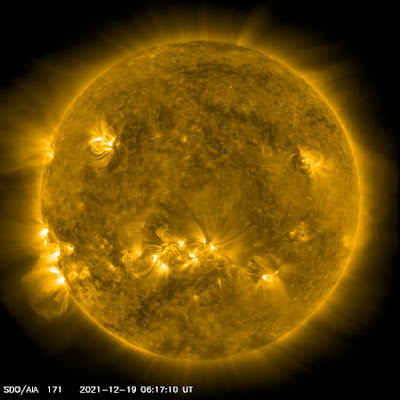 Merry Christmas
Merry Christmas
Merry Christmas to all my blog readers, and all the best to you and your families. Have a very happy and safe holiday.
Mike Weir, VE9KK, is a regular contributor to AmateurRadio.com and writes from New Brunswick, Canada. Contact him at [email protected].
 Hunting NDBs In CLE 275
Hunting NDBs In CLE 275
It's holiday CLE time once again. This one is designed to take your mind from your troubles and enjoy a relaxing 10 day beacon hunt!
For example, 'AA' near Fargo, ND, transmitted on 365 kHz and its upper sideband CW identifier was tuned at 366.025 kHz while its lower sideband CW ident could be tuned at 363.946 kHz. Its USB tone was actually 1025 Hz while its LSB tone was 1054 Hz.
Often, one sideband will be much stronger than the other so if you don't hear the first one, try listening on the other sideband.
Canadian NDBs normally have an USB tone only, usually very close to 400 Hz. They also have a long dash (keydown) following the CW identifier.
All NDBs heard in North America will be listed in the RNA database (updated daily) while those heard in Europe may be found in the REU database. Beacons heard outside of these regions will be found in the RWW database. These databases have recently been re-vamped and are slicker than ever before!
From CLE organizers comes the following CLE info:
Hello all
Here are the final details for our holiday listening event.
Please read this carefully to avoid disappointment!
The task is to build a size 10 pyramid, with a size 10 aerial on top.
We hope you will enjoy trying this challenge, whether you are a beginner or have been an NDB listener for many years, and whether you will have a lot of time, or rather little.
|
|
| Days: Saturday 25 Dec. to Monday 3 Jan.
. / \ Times: Midday - Midday, your LOCAL Time
/ \ Frequencies: 190 - 1740 kHz
/ \ Beacons: Normal NDBs (no UNIDs, DGPS, Navtex or Amateur)
~~~~~~~~~~~~~~
You make your pyramid by logging beacons from 19 different radio countries of your choice as follows:
10 different NDBs from the country at the base of the pyramid
9 NDBs from the next radio country
8 NDBs from the third, etc.
- - - all the way to:
2 NDBs from the ninth country at the top of the pyramid.
Finally, your pyramid needs a vertical antenna on it! That is made by logging 10 extra NDBs, each one from yet another different radio country.
An example of a completed pyramid is given at the end of this email.
You can log the NDBs in any time sequence, of course.
IMPORTANT The countries are the same ones that we always use, defined in our Radio Countries List http://www.ndblist.info/ndbinfo/countrylist.pdf
Each USA State, each Australian State and each Canadian Province is a separate radio country.
* If you can't reach size 10, please still send your log.
E.g. a size 7 would have 7 loggings for the base country, then 6, 5, 4, 3 and 2 loggings from five other different countries and, for the antenna, a single logging from each of 7 yet other different countries.
If you reach size 10, there is no need to stop there - with enough time, you could go on and try to build your pyramid bigger and higher by adding more loggings.
E.g. For a size 12 pyramid you would need to log:
12 NDBs from one country and 11, 10, 9, 8, . to 2 loggings from10 other different countries
12 extra loggings from 12 other different countries to make the antenna.
You can get a lot of help in planning your listening from the Rxx database https://rxx.classaxe.com/rww/signals
The 'Help' option explains how you can make very powerful enquiries in the Database.
LOGS: We suggest that you show your loggings in pyramid order. E.g., if you choose top-to-bottom, show each of the '1' loggings first (forming the aerial), then the '2', then the '3', then '4', '5', etc. with just an extra blank line to separate the loggings from different radio countries. There's no need to add any text to describe the levels in your pyramid because the Harvester Software will work that out automatically.
Please include for every logging:
# the UTC date ( e.g. '2021-12-25', etc. )*
# UTC time (the day changes at 00:00 UTC).
# kHz - the NDB's nominal, published, frequency.
# Call Ident.
Show those main log items FIRST. Other details, such as country, location, etc., go LATER on the same line. Do be careful that each of your NDBs really is associated with the radio country you intended.
*If you have made any loggings in January and also in December (by UTC time) we ask you please NOT to use the simple 'dd' date format (that can make difficulties for the good people who enter logs into the RXX database)
UNIDs, though not suitable for this CLE, could be shown in a SEPARATE section of your log, together with other interesting loggings that didn't fit into your pyramid.
Please post your 'Final' log to the List, preferably as a Plain Text email (not in an attachment) using 'CLE275' and 'FINAL' in its title. We'll send an 'Any More Logs?' email at about 18:00 UTC on TUESDAY 4th Jan. so you can check that your log has been found OK. Do make sure that it has arrived on the List by 09:00 UTC on WEDNESDAY 5th Jan. at the very latest.
We hope to finish making the combined results within two or three days.
The size of our pyramids will depend a lot on where each of us happens to be located. If you are unlucky there, why not try listening via a suitable remote receiver that gives good NDB listening?
You could use any one remote receiver for your loggings, stating its location and owner - with their permission if required.
A remote listener may NOT also use another receiver, whether
Local or remote, to obtain further loggings for a CLE.
As with all our CLEs, this is intended to be an educational and 'fun' event
- it's not a contest!
Enjoy your listening - you may find it quite addictive this time!
The COVID difficulties have made things really hard for most of us, but maybe a bit of pyramid-building will provide a safe and relaxing escape for a while!
Joachim and I hope you have a very Happy Christmas and many good things during 2022.
73
Brian and Joachim
--------------------------------------------------------------------
From: Brian Keyte G3SIA ndbcle'at'ndblist.info
Location: Surrey, SE England (CLE coordinator)
---------------------------------------------------------------------
Here is an imaginary example of a pyramid with its antenna,
maybe for a listener in British Columbia (BC).
Each B is a different Beacon:
B GRL 1 ndb
B PTR 1 ndb
B AZ 1 ndb
B NE 1 ndb
B IA 1 ndb
B NT 1 ndb
B CA 1 ndb
B CO 1 ndb
B NC 1 ndb
B ON 1 ndb
B B HWA 2 ndbs
B B B OR 3 ndbs
B B B B MB 4 ndbs
B B B B B WA 5 ndbs
B B B B B B MT 6 ndbs
B B B B B B B SK 7 ndbs
B B B B B B B B ALS 8 ndbs
B B B B B B B B B BC 9 ndbs
B B B B B B B B B B AB 10 ndbs
These listening events serve several purposes. They
• determine, worldwide, which beacons are out-of-service or have gone silent since the last CLE covering this range
• will indicate the state of propagation conditions at the various participant locations
• will give you an indication of how well your LF/MF receiving system is working
• give participants a fun yet challenging activity to keep their listening skills honed
Final details can be found at the NDB List website, and worldwide results, for every participant, will be posted there a few days after the event.
The NDB List Group is a great place to learn more about the 'Art of NDB DXing' or to meet other DXers in your region. There is a lot of good information available there and new members are always very welcome. As well, you can follow the results of other CLE participants from night to night as propagation is always an active topic of discussion.
You need not be an NDB List member to participate in the CLEs and all reports, no matter how small, are of much value to the organizers.
Remember - 'First-time' logs are always VERY welcome!
Reports may be sent to the NDB List Group or e-mailed to CLE co-ordinator, Brian Keyte (G3SIA), whose address appears above. If you are a member of the group, all final results will also be e-mailed and posted there.
Please ... give the CLE a try ... then let us know what NDB's can be heard from your location! Your report can then be added to the worldwide database to help keep it up-to-date.
Have fun and good hunting!
Steve McDonald, VE7SL, is a regular contributor to AmateurRadio.com and writes from British Columbia, Canada. Contact him at [email protected].
 LHS Episode #445: Year-End Round Table 445
LHS Episode #445: Year-End Round Table 445
Hello and welcome to Episode 445 of Linux in the Ham Shack. In this final episode of 2021, we invite listeners to join us via Discord for a discussion of amateur radio, technology, open source software and hardware and the year in review. We even depart briefly into hedonism as well. We hope you enjoy this community-driven content, have a safe and happy holiday season and join us again when we re-start the show on January 6, 2022.
73 de The LHS Crew
Russ Woodman, K5TUX, co-hosts the Linux in the Ham Shack podcast which is available for download in both MP3 and OGG audio format. Contact him at [email protected].
 RAC Winter contest.
RAC Winter contest.
The RAC Winter contest is in the books and my second contest where I was running and not S&P. The propagation numbers took a big leap in the right direction before and during the contest. I did find that even with the good conditions there was steep QSB on 20 and 40m.
I find this more of a relaxed contest compared to the international contests. Most of the time, CW speeds were a bit slower. When someone you know makes contact, there is time to say thanks and 73. Speaking of someone you know, I had the pleasure of John AE5X a blogger I follow contact me, and we had the opportunity to send pleasantries to each other. Thanks for the contact John.
I found there was the early contest jitters, but I did settle in a bit sooner compared to the other contest. One take away was to NEVER try drinking coffee while calling CQ! Thought I had this calling CQ thing down, I decided to have a drink of coffee as the PC was belting out RAC DE VE9KK. While in mid-sip of coffee, the radio went to receive and a nice multiplier station was coming back to me! In a rush to put the coffee down my elbow was banged, coffee all over the keyboard and multi station gone!
Overall, a great time was had.
Mike Weir, VE9KK, is a regular contributor to AmateurRadio.com and writes from New Brunswick, Canada. Contact him at [email protected].
 RAC Winter contest.
RAC Winter contest.
The RAC Winter contest is in the books and my second contest where I was running and not S&P. The propagation numbers took a big leap in the right direction before and during the contest. I did find that even with the good conditions there was steep QSB on 20 and 40m.
I find this more of a relaxed contest compared to the international contests. Most of the time, CW speeds were a bit slower. When someone you know makes contact, there is time to say thanks and 73. Speaking of someone you know, I had the pleasure of John AE5X a blogger I follow contact me, and we had the opportunity to send pleasantries to each other. Thanks for the contact John.
I found there was the early contest jitters, but I did settle in a bit sooner compared to the other contest. One take away was to NEVER try drinking coffee while calling CQ! Thought I had this calling CQ thing down, I decided to have a drink of coffee as the PC was belting out RAC DE VE9KK. While in mid-sip of coffee, the radio went to receive and a nice multiplier station was coming back to me! In a rush to put the coffee down my elbow was banged, coffee all over the keyboard and multi station gone!
Overall, a great time was had.
Mike Weir, VE9KK, is a regular contributor to AmateurRadio.com and writes from New Brunswick, Canada. Contact him at [email protected].
 ICQ Podcast Episode 366 – Seasonal Radio Fun
ICQ Podcast Episode 366 – Seasonal Radio Fun
In this episode, Martin Butler (M1MRB) is joined by Chris Howard (M0TCH), Martin Rothwell (M0SGL) and Frank Howell (K4FMH) to discuss the latest Amateur / Ham Radio news. Colin (M6BOY) rounds up the news in brief and in the episode's feature Seasonal Radio Fun.
We would like to thank David Bowie (ZL4DRB) and our monthly and annual subscription donors for keeping the podcast advert free. To donate, please visit - http://www.icqpodcast.com/donate
- Storm Arwen - Why Power Cuts Left People Unable to Phone for Help
- World’s Smallest Moon Lander will Put Ham Radio Transmitter on the Moon
- Senator Blumenthal Supports Amateur Radio at Senate Confirmation Hearing
- 60th Anniversary of Launch of First Ham Radio Satellite
- RSGB National Radio Centre to Close Temporarily
- First GI-QRP Convention
- Monaco Special Event
Colin Butler, M6BOY, is the host of the ICQ Podcast, a weekly radio show about Amateur Radio. Contact him at [email protected].
 Cycle 25 … On The Move?
Cycle 25 … On The Move?
Anyone looking at the Sun this week has to be impressed with its sudden reawakening over the past few days. From its recent somewhat troubling slumber, with flux numbers in the high 70s, these values have quickly risen to a Cycle 25 high in the 120s as of early Saturday. With at least two more active regions about to rotate into view shortly, it seems as though these numbers might continue to grow.
What is interesting is the suddenness with which these groups formed as this is a keystone marker for the long awaited ‘terminator’ event … the point at which cycle growth starts to increase rapidly. Is this it or will the Sun go back to sleep as it has in the past few excursions into the 90’s?
If this rapid increase does indeed herald the terminator's arrival, it’s a sign that Cycle 25 should be one of above average strength. Wouldn’t that be nice after Cycle 24’s weak showing over the past 11 years.
With the present asymmetry of the Sun's two hemisphere, we are guaranteed a cycle with a double hump in the peak years. The first peak is usually the strongest but not always. Let's see how Cycle 25 plays out in this department.
I’ve yet to do any comparisons with past progress of strong cycles at this same point into their upward climb but let’s cross our fingers and hope the present numbers continue for some time. There will always be drops of course but if recovery is quick, we may still be in for a good ride in Cycle 25.
Steve McDonald, VE7SL, is a regular contributor to AmateurRadio.com and writes from British Columbia, Canada. Contact him at [email protected].



















